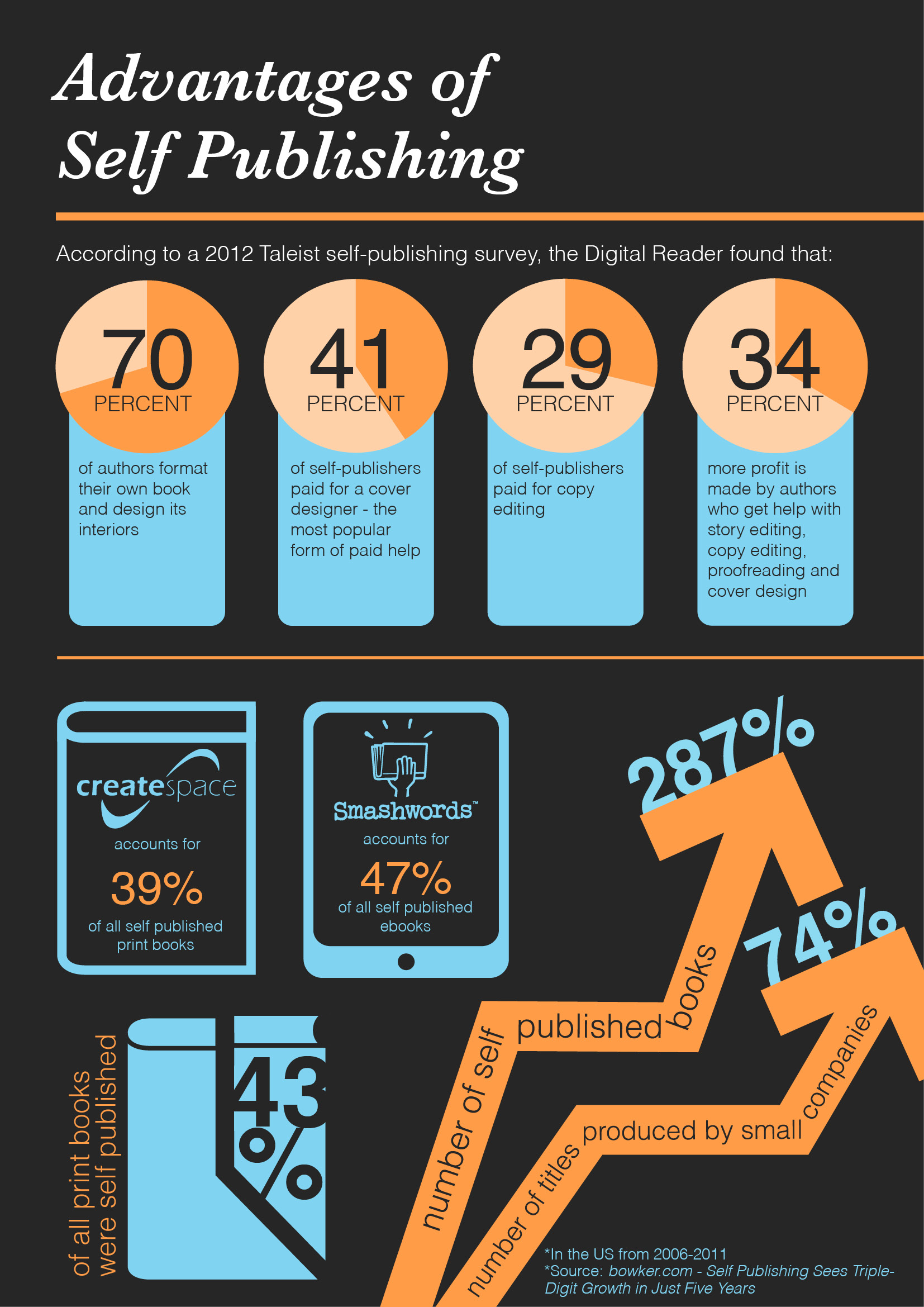Why self-publishing is becoming a popular alternative
Self-publishing has emerged from the peripheries of the publishing industry to become one of the primary contenders in mainstream publishing. According to research released by American marketing research company, Bowker, self publishing has seen triple digit growth in five years.
In February of 2012, Taleist conducted a survey that asked 10007 self-publishers 61 questions relating to their self-publishing experiences. The results of the survey reveal some interesting information about the current state of the self-publishing industry. Liquid State created the following infographic that examines some of the key findings of both of these studies.

Self publishing trends
Self-publishing serves as a rewarding platform for those with a story to tell, and consequently, Bowker identified a growing trend within the publishing industry of people opting to take this approach. Between 2006 and the end of 2012, the number of self-published books and digital books in America increased by 287%. In 2011, the 148, 424 books and digital books that were self-published in America amounted to 43% of the yearly total print output.
According to the Taleist survey, 70% of self-published authors were comfortable formatting their own book and designing its interior. Interestingly, they were much more likely to pay for help with things like proof reading, copy editing, and cover design. Of the self-publishers interviewed by Taleist, 41% paid for a cover designer and 29% paid for help with copyediting- and for good reason. Self-publishers who paid for assistance in these departments made 34% more profit than those who took a universal DIY approach.
Bowker research identified the two most dominant firms in America to offer support to self-publishers as Createspace and Smashwords. Createspace accounts for 39% of all self- published print books, while Smashwords dominates the digital sphere, accounting for 47% of self-published digital books.
This support system, combined with the fact that self-publishing offers a way of eluding the traditional gatekeepers, yields a more attractive option for publishers. As we continue to hear success stories from self-publishers, the industry will continue to experience growth and level out the publishing playing field.

